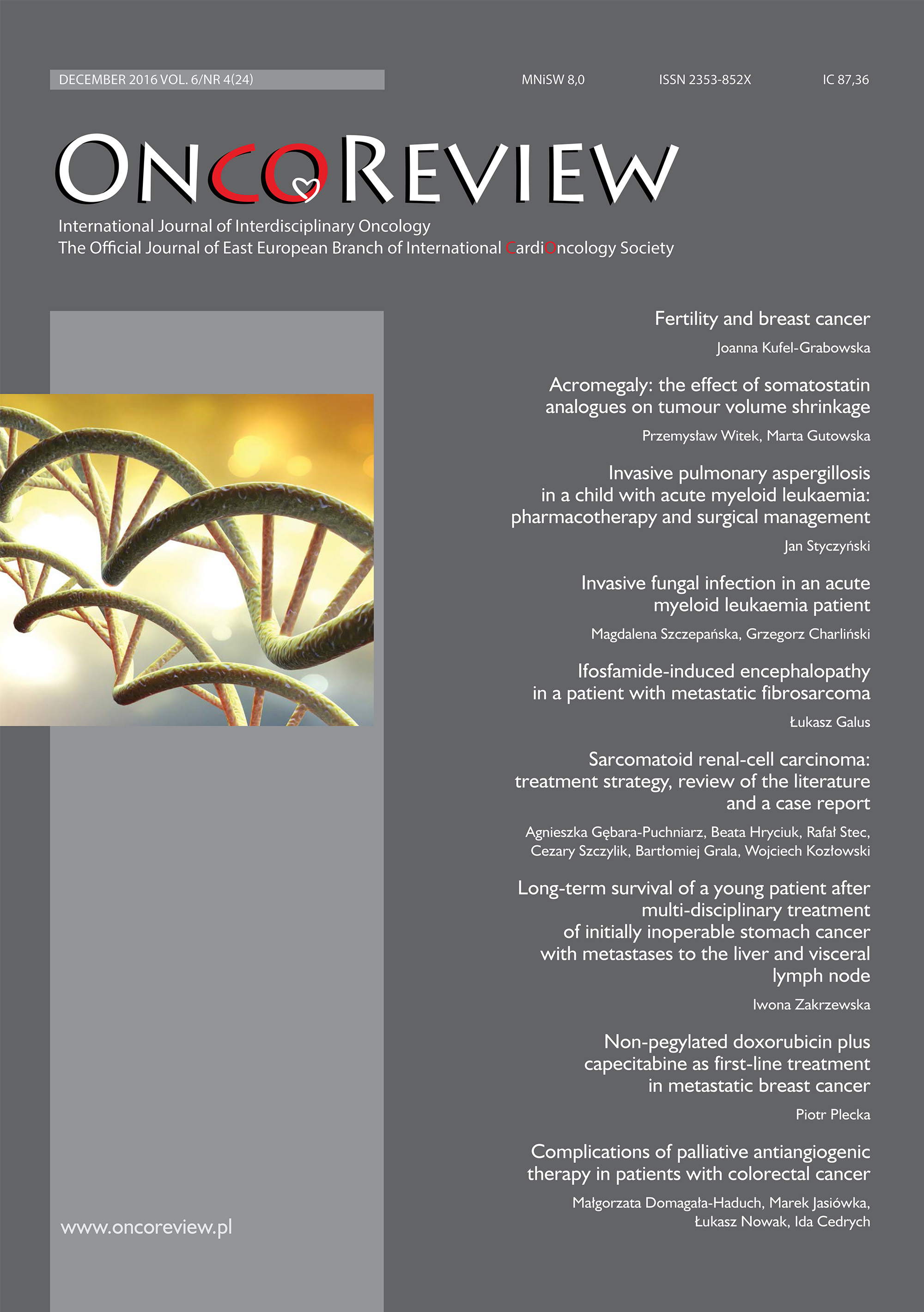Invasive pulmonary aspergillosis in a child with acute myeloid leukaemia: pharmacotherapy and surgical management Case report
Main Article Content
Abstract
This paper reports on diagnostic and therapeutic management of pulmonary invasive fungal disease (IFD) in a child with relapsed acute myeloid leukaemia, undergoing chemotherapy followed by haematopoietic stem cell transplantation. Surgical management with resection of the involved lung tissue was based on the location of fungal infiltrates close to large circulatory vessels. After examination of resected pulmonary tissue, a diagnosis of proven IFD was done. This case report is an example that aspergillosis is usually the cause for pulmonary IFD. Pharmacotherapy of pulmonary IFD should be based on compounds with good penetration to lung tissue: amphotericin B lipid form or voriconazole.
Downloads
Metrics
Article Details

This work is licensed under a Creative Commons Attribution-NonCommercial 4.0 International License.
Copyright: © Medical Education sp. z o.o. This is an Open Access article distributed under the terms of the Attribution-NonCommercial 4.0 International (CC BY-NC 4.0). License (https://creativecommons.org/licenses/by-nc/4.0/), allowing third parties to copy and redistribute the material in any medium or format and to remix, transform, and build upon the material, provided the original work is properly cited and states its license.
Address reprint requests to: Medical Education, Marcin Kuźma (marcin.kuzma@mededu.pl)
References
2. Marchetti O, Lamoth F, Mikulska M et al. ECIL recommendations for the use of biological markers for the diagnosis of invasive fungal diseases in leukemic patients and hematopoietic sct recipients. Bone Marrow Transplant 2012; 47: 846-854.
3. Ascioglu S, Rex JH, de Pauw B et al. Defining opportunistic invasive fungal infections in immunocompromised patients with cancer and hematopoietic stem cell transplants: An international consensus. Clin Infect Dis 2002; 34: 7-14.
4. de Pauw B, Walsh TJ, Donnelly JP et al. Revised definitions of invasive fungal disease from the European Organization for Research and Treatment of Cancer/Invasive Fungal Infections Cooperative Group and the National Institute of Allergy and Infectious Diseases Mycoses Study Group (EORTC/MSG) consensus group. Clin Infect Dis 2008; 46: 1813-1821.
5. Groll AH, Castagnola E, Cesaro S et al.: Fourth European Conference on Infections in Leukaemia (ECIL-4): Guidelines for diagnosis, prevention, and treatment of invasive fungal diseases in paediatric patients with cancer or allogeneic haemopoietic stem-cell transplantation. Lancet Oncol 2014; 15: e327-e340.
6. Herbrecht R, Fluckiger U, Gachot B et al. Treatment of invasive candida and invasive aspergillus infections in adult haematological patients. EJC Supplements 2007; 5: 49-59.
7. Arendrup MC, Bille J, Dannaoui E et al. ECIL-3 classical diagnostic procedures for the diagnosis of invasive fungal diseases in patients with leukaemia. Bone Marrow Transplant 2012; 47: 1030-1045.
8. Maertens J, Marchetti O, Herbrecht R et al. European guidelines for antifungal management in leukemia and hematopoietic stem cell transplant recipients: Summary of the ECIL 3 – 2009 update. Bone Marrow Transplant 2011; 46: 709-718.
9. Chretien ML, Legouge C, Pages PB et al. Emergency and elective pulmonary surgical resection in haematological patients with invasive fungal infections: A report of 50 cases in a single centre. Clin Microbiol Infect 2016. http://doi.org/10.1016/j.cmi.2015.12.029.
10. Reischies F, Hoenigl M. The role of surgical debridement in different clinical manifestations of invasive aspergillosis. Mycoses 2014; 57(supl. 2): 1-14.

